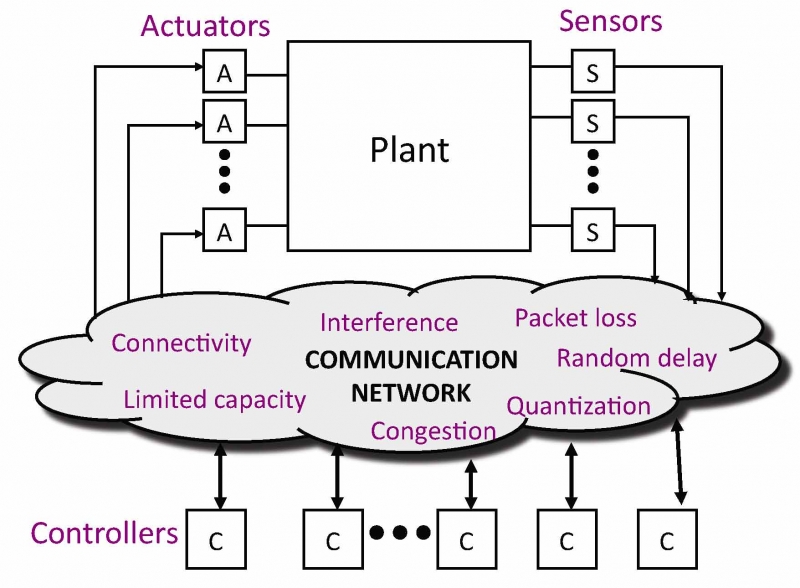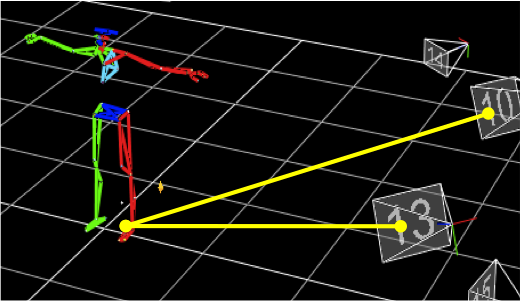

Research
|
RESEARCH AREAS |
 |
Systems Biology:
Systems biology aims at model and discover emergent properties, properties of cells, tissues and organisms functioning as a system whose theoretical description is only possible using mathematics and dynamical systems theory.
These involve metabolic networks within the cell as well as the
interaction of cell in tissues and organs. Collaborating with an
interdisciplinary group of researchers we leverage our expertise to sustain this research area. Ongoing specific research topics regard:
dynamics of two components systems, cell differentiation, stochastic bistability in cells, synthetic biology for microbioma |
|
|
Networked Control System (NCSs):
The revolutionary developments in microelectronics, the internet and wireless communication over the past decades have led to devices that can sense, compute, communicate with one another, and control their environment with an unprecedented level of scale. In this context, a new scientific and technological paradigm known as networked control systems (NECs), has recently appeared. More precisely, a networked control systems is a system composed of physically distributed smart agents that can sense and act on the environment, and that communicate with one other through a communication network to achieve a common goal. Typical examples that fall into this class are Wireless Sensors and Actuators Networks (WSANs) for environmental monitoring and control, multi-vehicle networks for coordinated exploration, camera networks for surveillance, multi-camera coordinated motion capture, smart grids for energy distribution and management, etc.. NCSs differ from more traditional control systems because of their interdisciplinary which requires the convergence of control theory, communications, computer science and software engineering. The challenges reside in the design of control systems that are robust to communication constraints like bandwidth, random delay and packet loss, to computational constraints due to the large amount of data to be processed or to the distributed nature of the sensing and control, to real-time implementation on limited resources devices, an to complexity to the large number of possibly unreliable agents involved.
|
 |
Wireless Sensor and Actuator Networks (WSANs)
Wireless sensor and actuators networks are systems composed of a large number of mainly static and battery-powered devices which are provided with limited computational and sensing capabilities and which can communicate with one other through low-power wireless communication. These devices have only limited communication range, therefore they need to operate with multi-hop communication to relay information from one node to another, similarly to a wireless internet. WSANs have been mainly adopted for fine-grain environmental monitoring of quantities like temperature, humidity, light, and other chemical species, and for indoor RF localization and tracking. More recently, the inclusion of nodes able to act on the environment, allowed these systems to be used also for control applications like comfort control in buildings, climate control in greenhouses. The main control challenges in WSAN arise from the need of parsimonious use of the battery-powered nodes through smart sensor estimation, data compression, MAC and routing algorithms, and the need of estimation and control algorithms that can handle long random delay and packet loss due to the wireless nature of the medium and the multi-hop communication. |
 |
Biomimetic Locomotion: Insect Flight and Fish Swimming
Although man-made vehicles have been very successful in transportation systems in any possible environment (ground, surface, underwater, air, space), animal locomotion is still unbeaten under many circumstances such as maneuverability and acrobatic maneuvers of insect flight or maneuverability in highly turbulent environments like box-fish in coral reefs. There are two main control challenges in replicating these types of locomotion with electromechanical devices. The first challenge is the analysis and design of the body motion control via oscillating appendages likes wings and fins rather than propellers that can generate forces or torques as in traditional vehicles. The second is the design of sensor fusion algorithms from multiple heterogeneous sensors that allow accurate orientation and position estimation. |
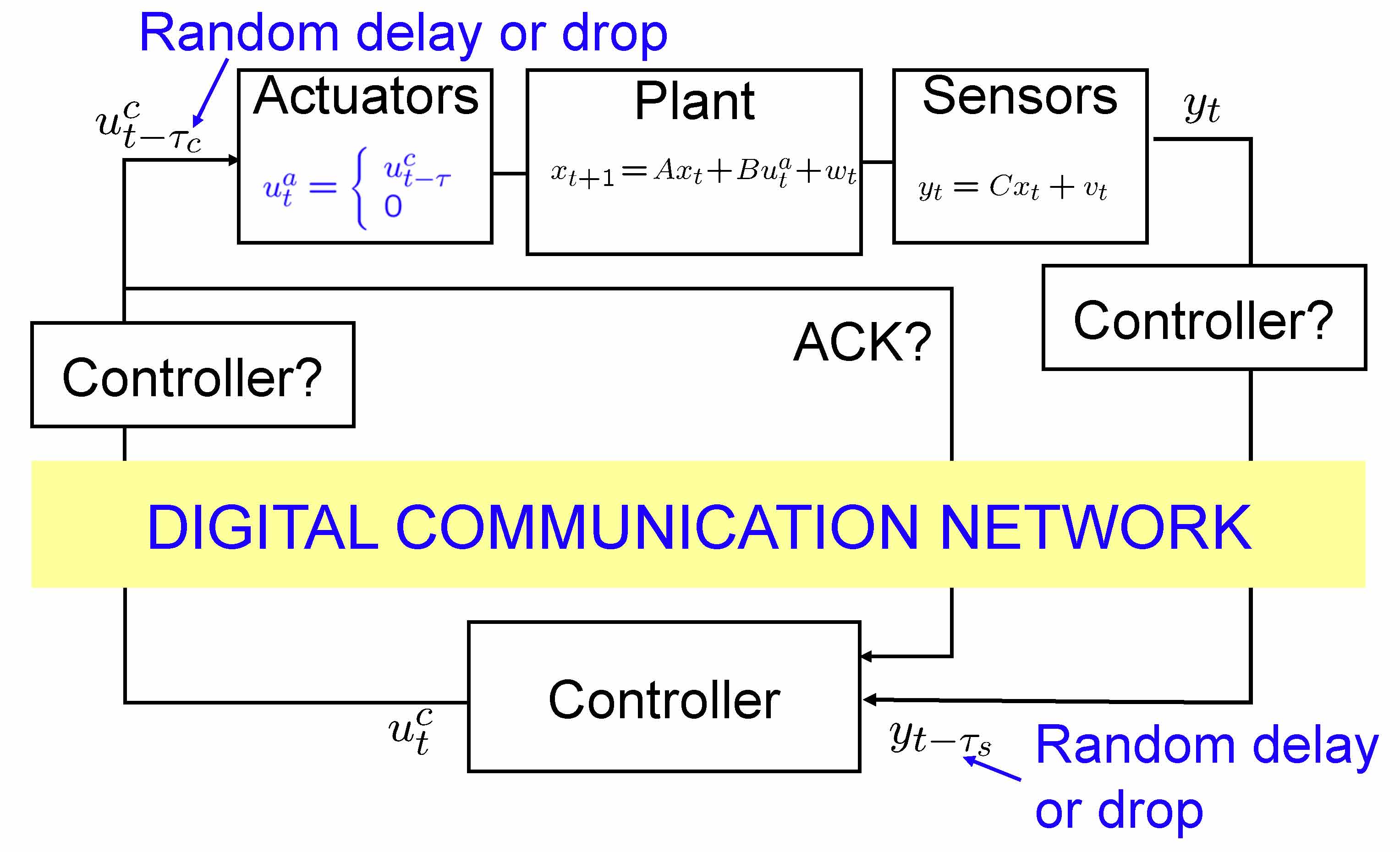 |
Packet-drop Networks
The current trend in control systems and industrial automation is to avoid the physical co-location of sensors, actuators and controller either by necessity as in moving parts that cannot be cabled or by convenience as the replacement of wired communication with wireless communication. However, the use of an unreliable communication medium like the wireless or a shared medium like Ethernet or Internet results in random delay between the sensor and the controller and between the controller and the actuator, or even packet loss due to noise or traffic congestion. The main control challenge is understanding how to design estimation and control systems that can compensate random delay and packet loss. For examples, the sensors should transmit the raw measurements or should pre-process them before transmission? What should the actuator do if the desired control input from the controller is not received? Does the controller know if a control packet previously transmitted has been successfully received? Are the packets time-stamped or not?
|
 |
Distributed Estimation, Control and Optimization
One of the most important challenges in the design of large-scale networked control systems like WSANs and smart power grids is scalability and robustness to subsystems failure. Each subsystem, often referred as agent, is connected with the other subsystems though local physical interaction as in smart power grids or though local communication as in WSANs. Although many agents may not communicate or interact directly with all the other agents, the system is nonetheless connected and therefore each agent's action can affect the behavior of the system as a whole. When the scale of these system is large, centralized control or real-time decision making strategies are not feasible due to long communication delay to get the information from all nodes or simply because the amount of data became to large to be timely processed in a single location. Moreover, differently from traditional computer networks, some of these agents are likely to fail, communication is not reliable, and new agents might join the network. The recent trend to address these challenges by developing distributed algorithms for estimation, control and optimization. For example, popular algorithms known as consensus algorithms have been shown very effective to solve quadratic optimization, sensor calibration, least-squares identification, and clock synchronization. |
|
PROJECTS |
|
|
Real-time smart multi-camera 3D Motion Capture:
This project addresses the problem of reconstructing the 3D motion of multiple objects moving within a predefined volume from the videos of multiple cameras. In particular, the motion is captured by tracking a number of unlabeled markers placed on each target object. Each camera placed around the arena focuses only on a small portion of the total volume to achieve high resolution, and each point of the arena can be seen from multiple cameras to avoid cluttering. The motion of the objects can be reconstructed only by combining the videos from all cameras. Although motion marker-based motion capture is a well studied problem, the main novel challenge reside in the need of performing the 3D motion capture from hundreds of cameras in real-time. This poses severe problems due to obvious bandwidth constraints and to computational constraints. Therefore, the goal of this project to devise smart distributed tracking algorithms and adaptive cameras bundling that can take advantage of smart cameras capable of autonomous computation and communication to reduce both computational burden and communication requirements.
|
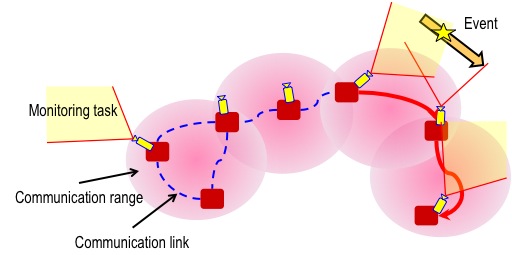 |
Self-calibration and Multiple Target Tracking in Smart Camera Networks
This project addresses the problem of designing surveillance systems based on a network with hundreds of cameras. In particular we are interested in developing a self-calibrating system that requires only minimal installation and maintenance costs, and that it is able to accomplish multiple tasks such as multiple target tracking, event detection and recognition, and redundant video storing. The main challenges reside in the bandwidth and computation requirements which makes unfeasible a centralized control and management architecture. The goal of this project is to consider a network of smart cameras, i.e. cameras with computational, memory and communication resources, which can cooperate though distributed algorithms to accomplish multiple and possibly competitive tasks, and provide the end user of the surveillance system only the essential information.
|
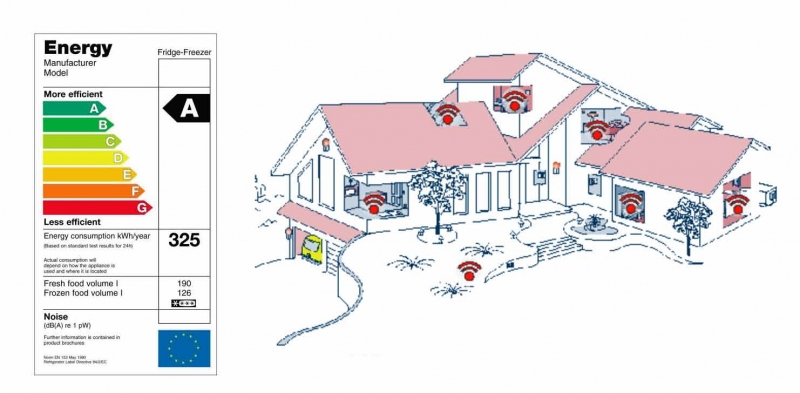 |
Identification, Monitoring and Control of Smart Greenhouses and Buildings
thermal efficiency of a building, i.e. energy labelling based on experimental data; in thermal monitoring and comfort control systems especially in large buildings; in energy saving quantification after remodeling and energy-specific retrofitting of existing buildings; and in automatic fault-detection, monitoring an control of Heating Ventilation and Air Conditioning (HVAC) systems. Particularly useful in this context is the adoption of Wireless Sensor and Actuators Networks (WSANs), which provide easy installation and maintenance. The main focus of the project is on the experimental aspects of the applications and the application of advanced control tools like adaptive estimation and model predictive control. |
|
RF Target Tracking using Wireless Sensor Networks
|
|
PAST PROJECTS |
|
|
SENSNET: Analysis and design of large
scale sensor networks
for distributed control applications
Funding: EU Marie Curie Actions IRG
Duration: 2004-2006
This
project considered the control issues and requirements arising from
applications which exploit large sensor networks for the monitoring and control
of large, rapidly changing environments. The
main innovative claims that will be generated from this project include (1)
development of new concepts and tools for the abstraction and analysis of
complex systems, (2) design of control systems under communication constraints,
and (3) real-time processing of distributed sensory data.
|


